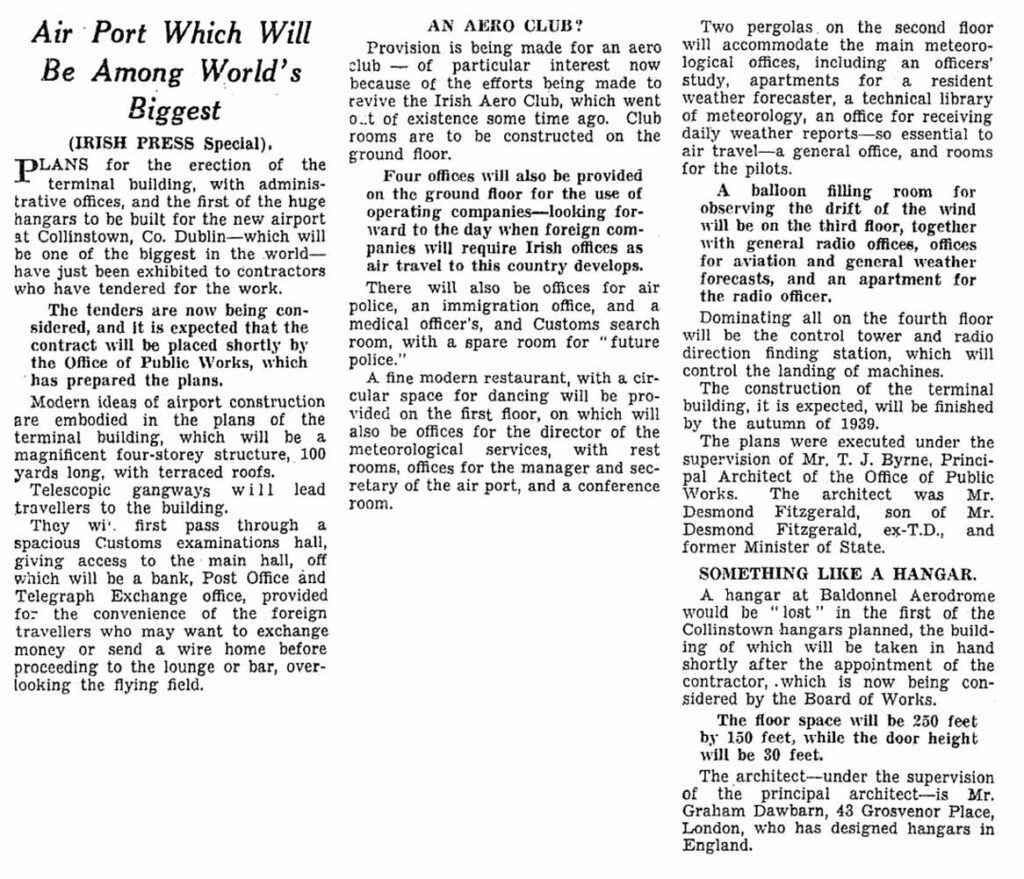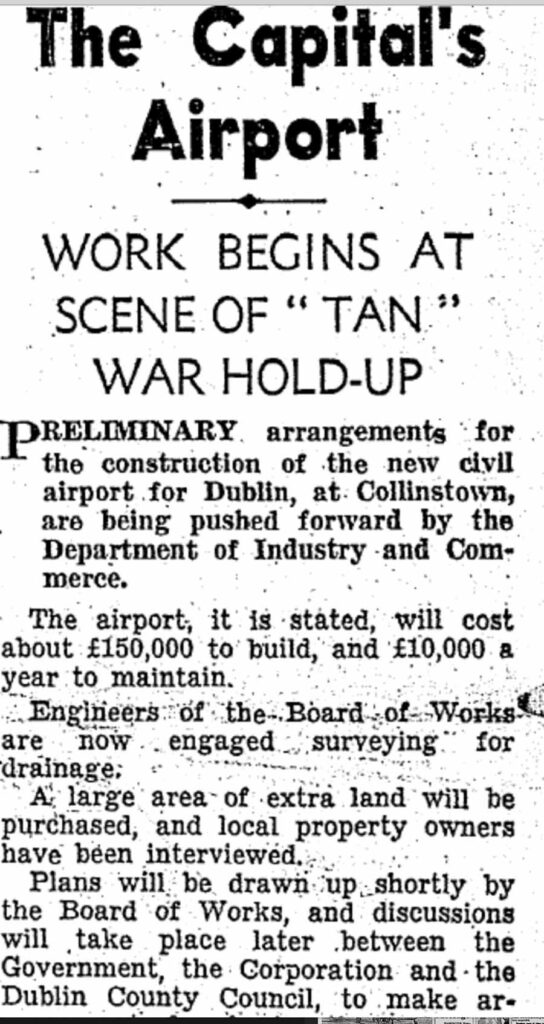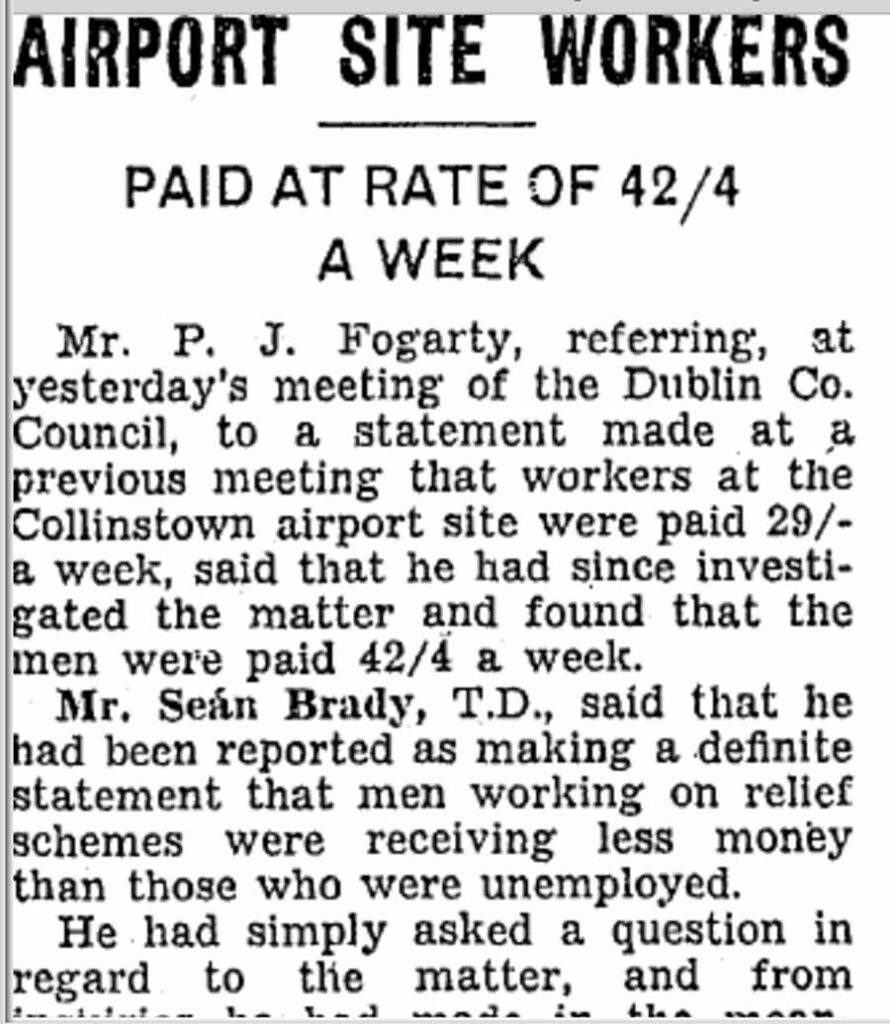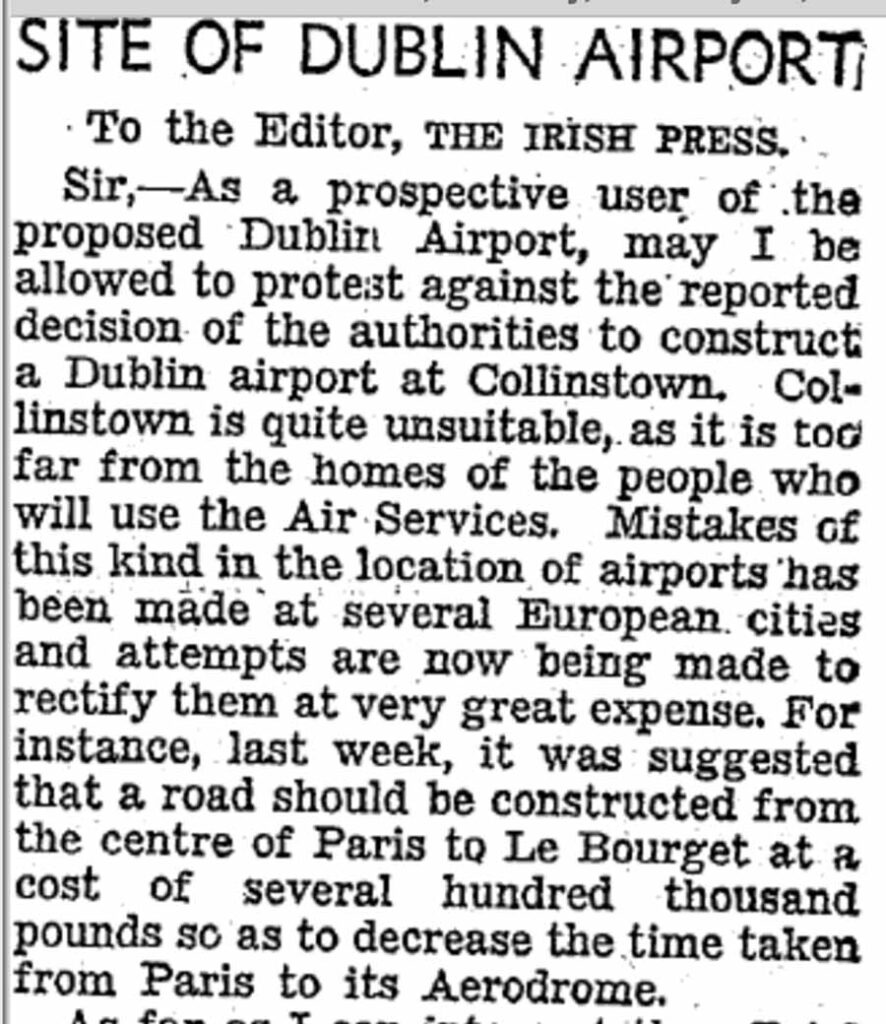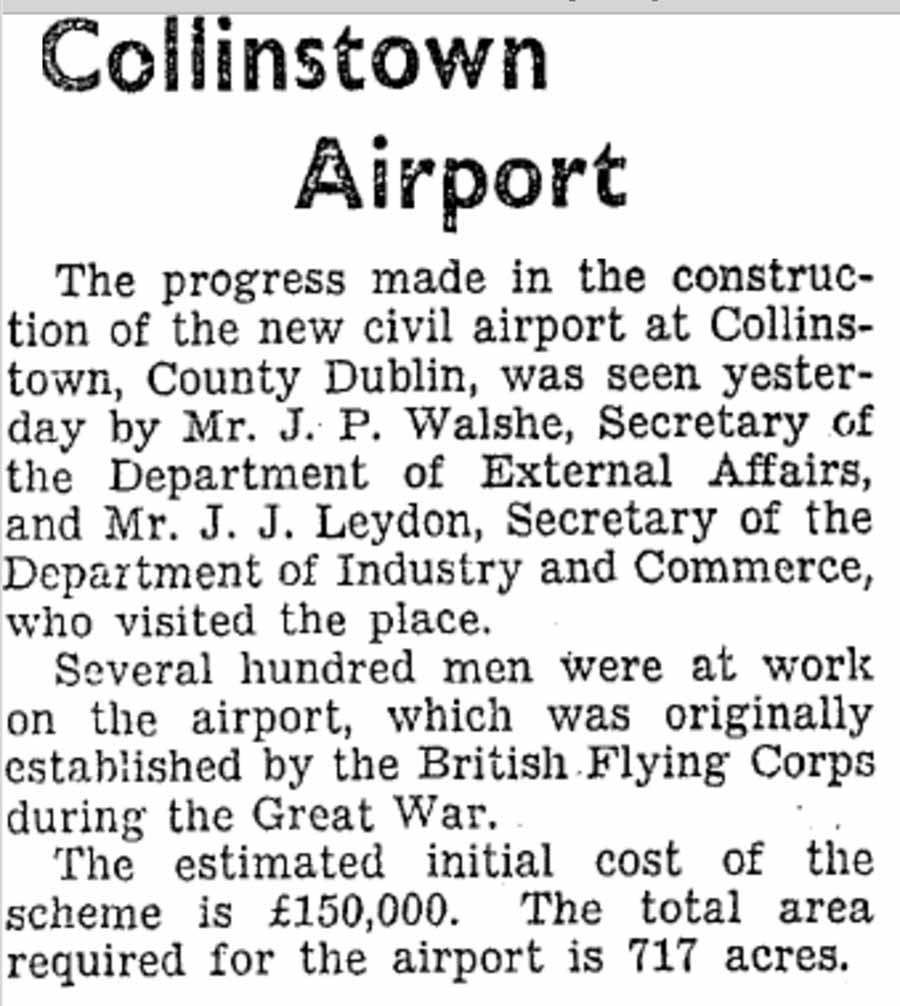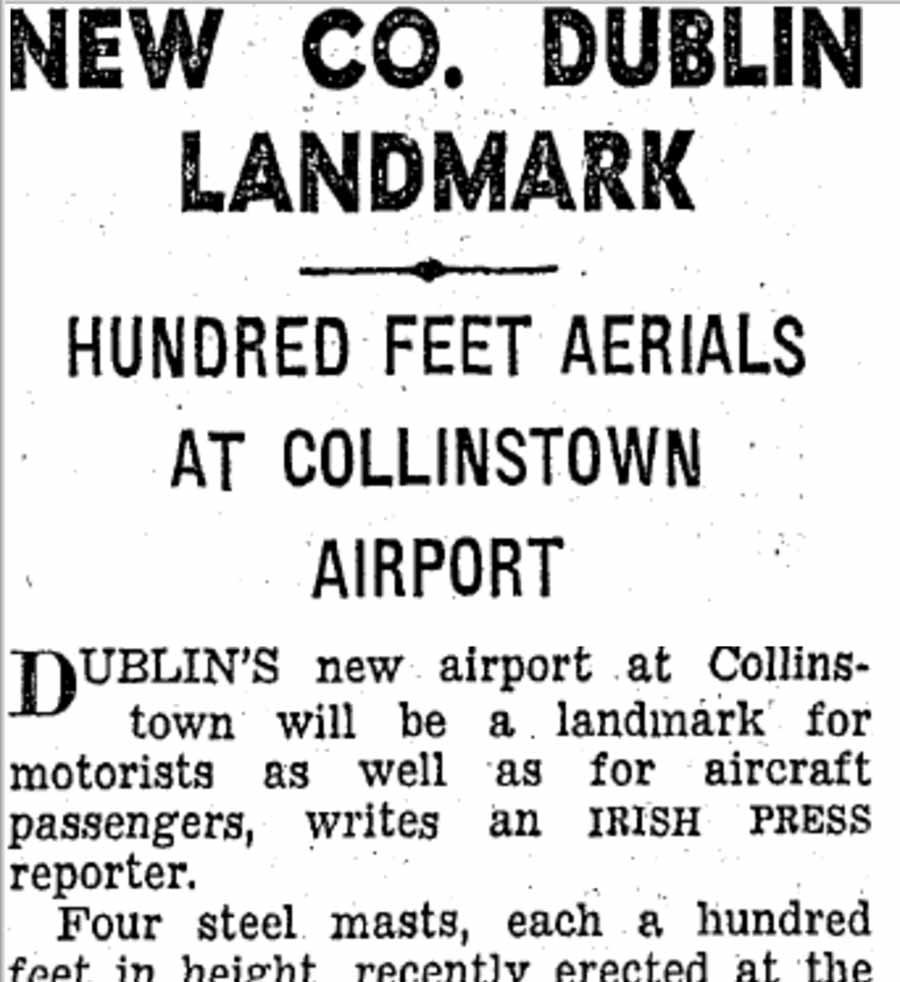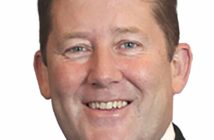
Back in June 1935, Dublin’s Lord Mayor, Alfie Byrne, urged Sean Lemass to consider establishing an airport as a critical relief project and suggested Collinstown for the site. However, Lemass, citing the Air Navigation Act of 1930, stated that creating aerodromes was mainly a responsibility for municipal authorities. Collinstown, a former British military air station, was among several discussed locations.
Desmond McAteer proposed an ambitious, visionary plan for Merrion Strand that included extensive land reclamation, a ‘aerodrome’ over a mile square, housing, recreational areas, and easy access to the Great Southern Railway at Booterstown. The project, estimated at £1,500,000—a significant amount at the time—was to be spread over five years, with Government and Corporation contributions covering the entire cost. McAteer suggested that thinking in terms of future generations rather than immediate returns could justify the investment.
Among the other options, Phoenix Park, although used for air displays, was dismissed for legal and technical reasons. This prompted James Dillon to seek assurance in late 1936 that no such plans were in the Government’s mind. He was assured it was ‘most unlikely.’ In the 1930s, Finglas was a small village, and Kildonan Airport, located two kilometers away on private Fitzpatrick family property, was a private airfield. It was used by the Irish Aero Club, Everson Flying Services and Dublin Air Ferries. Katherine Butler, who earned her private license there, described it as ‘a field with a hangar, some aircraft, a clubhouse, a petrol pump, a windsock—the Kildonan Aerodrome.’
Captain Armstrong, later Aer Lingus Chief Pilot, crash-landed at Kildonan in fog in 1933 while returning from Aintree with Grand National photos. These were the first to be published in an Irish newspaper the morning after the race. Despite its role in private flying, Kildonan wasn’t seriously considered for Dublin’s permanent airport site.
Developing Collinstown
On December 9, 1936, it was officially announced that Collinstown would be the chosen site for development. The plan involved developing a total of 717 acres, with 258 acres already owned by the State through the Office of Public Works. The development costs were estimated at £150,000, and after considerable political negotiation, it was agreed that the costs would be shared among the Government, Dublin Corporation, and Dublin County Council, with the State covering half and the Corporation contributing £58,000.
Collinstown, located approximately nine kilometres north of the city centre, was initially selected as a British air force base in 1917 by Sholto Douglas of the Royal Flying Corps, who later became a member of the Board of Aer Lingus on the nomination of British European Airways. The base was notably the site of an audacious arms raid during the War of Independence. Following the Treaty and the British withdrawal, the base fell into disuse and reverted to farmland, maintaining this character until well into the Aer Lingus period. On March 13, 1941, for instance, the General Manager recommended to the Board that twenty-three acres of land at the airport should be cultivated for growing oats, with these and other agricultural activities continuing to contribute to airline revenue throughout the Emergency period.
Levelling and draining work at Collinstown provided much-needed employment, although there were complaints—similar to those from workers at Rineanna—about the low wages paid by contractors: unskilled workers were earning 29 shillings (€1.71) per week, well below trade union rates. The first of the four grass runways was ready for use by late 1937 and was tested by the Air Corps. A test flight by an Imperial Airlines de Havailland albatross used the airport in June 1939.
Numbers were growing. During the five months from 23 October 1939 to 31 March 1940 a total of 2,893 traveled on the Dublin-Aer Lingus service, as compared with 760 on the Dublin-Bristol-London service in the previous twelve months.
The airport management was passed to Aer Rianta through its Aer Lingus subsidiary—a peculiar arrangement that would later cause difficulties. Board meetings were conducted jointly, and in December 1941, both boards were reorganised with identical membership, appointing John Leydon as overall Chairman.
